Discover the World’s Treasures: Your Ultimate Guide to the British Museum, London
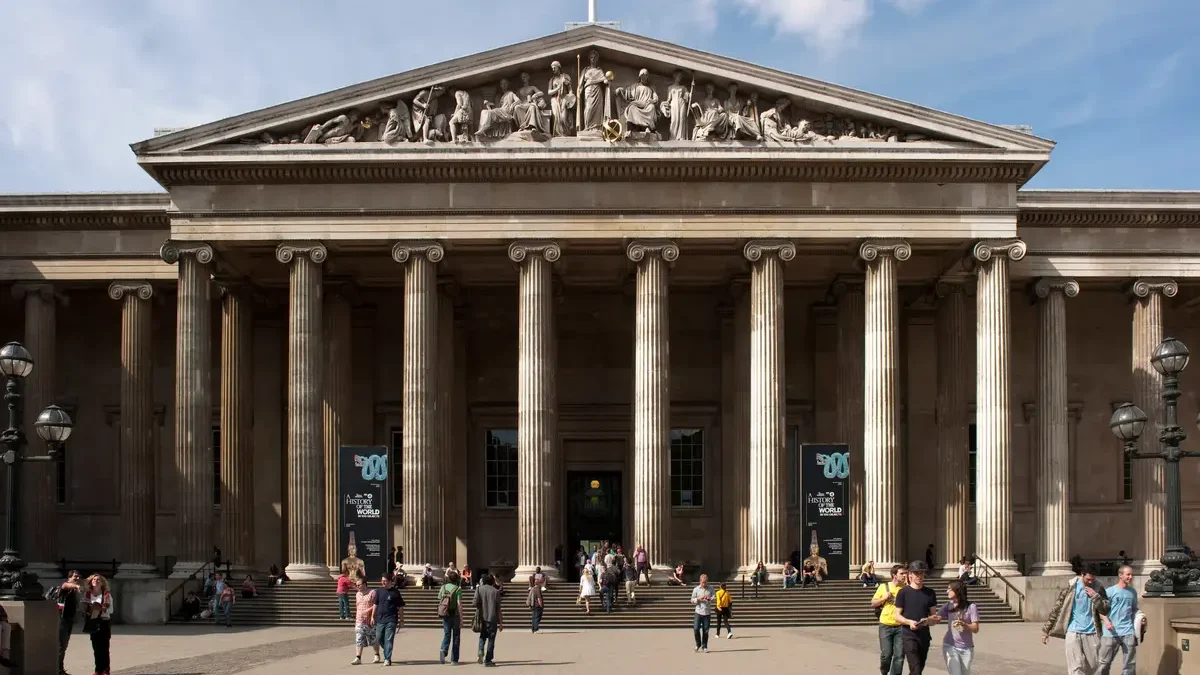
Discover the World’s Treasures: Your Ultimate Guide to the British Museum, London
Welcome to the British Museum, one of the world’s most renowned cultural institutions, located in the heart of London. Home to an unparalleled collection of artifacts from across the globe, the British Museum offers an extraordinary journey through human history, art, and culture. This comprehensive guide provides everything you need to know for an enriching visit to the British Museum, including its history, key collections, unique features, and practical information for tourists.
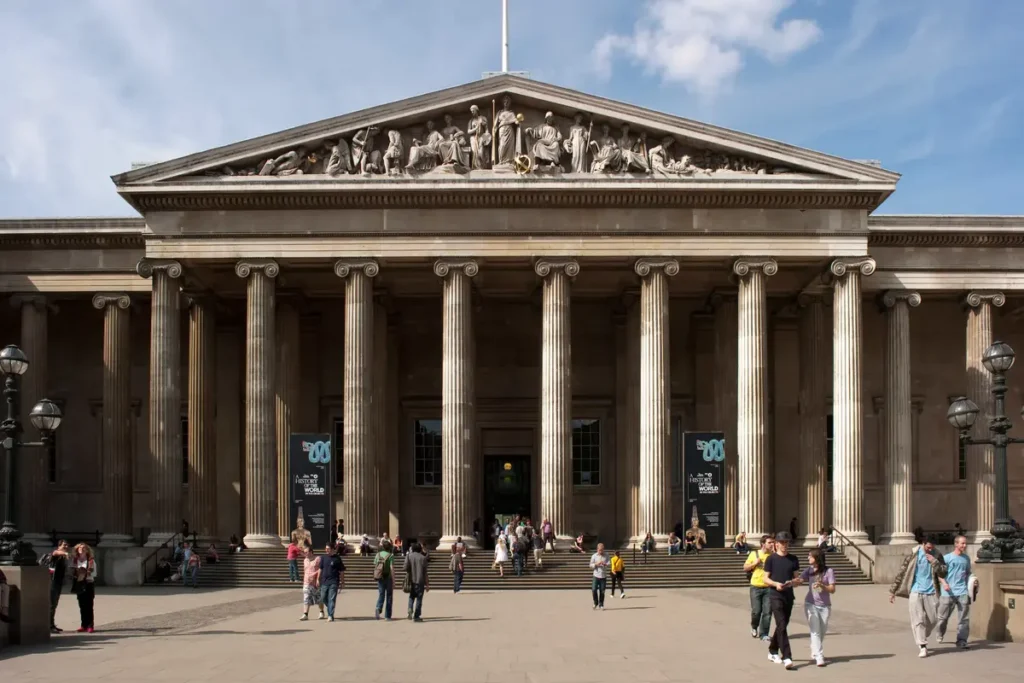
A Glimpse into the History of the British Museum
Founding and Early Years
The British Museum was founded in 1753, largely based on the collections of the physician and scientist Sir Hans Sloane. Sloane’s collection of over 71,000 objects, including books, manuscripts, natural specimens, and antiquities, formed the core of the museum’s holdings.
- Sir Hans Sloane: Learn about Sir Hans Sloane, whose extensive collection of artifacts and curiosities laid the foundation for the British Museum.
- Act of Parliament: The museum was established by an Act of Parliament and was the first national public museum in the world, open to visitors from all walks of life.
Growth and Expansion
Over the centuries, the British Museum’s collection grew exponentially through acquisitions, donations, and excavations.
- Rosetta Stone: Discover how the acquisition of the Rosetta Stone in 1802, which played a crucial role in deciphering Egyptian hieroglyphs, significantly enhanced the museum’s reputation.
- Elgin Marbles: Explore the controversy and significance of the Elgin Marbles, ancient Greek sculptures acquired by Lord Elgin in the early 19th century.
Architectural Evolution
The British Museum’s architecture has evolved significantly since its inception, reflecting its expanding collections and the need to accommodate a growing number of visitors.
- Montagu House: Initially housed in Montagu House, the museum’s early years saw it outgrow these premises, prompting the construction of the current building.
- Robert Smirke’s Design: The neoclassical design by architect Robert Smirke, completed in the mid-19th century, provided the museum with its iconic facade and expansive galleries.
- The Great Court: The transformation of the central courtyard into the Great Court, with its stunning glass roof designed by Norman Foster, revitalized the museum and created a new focal point for visitors.
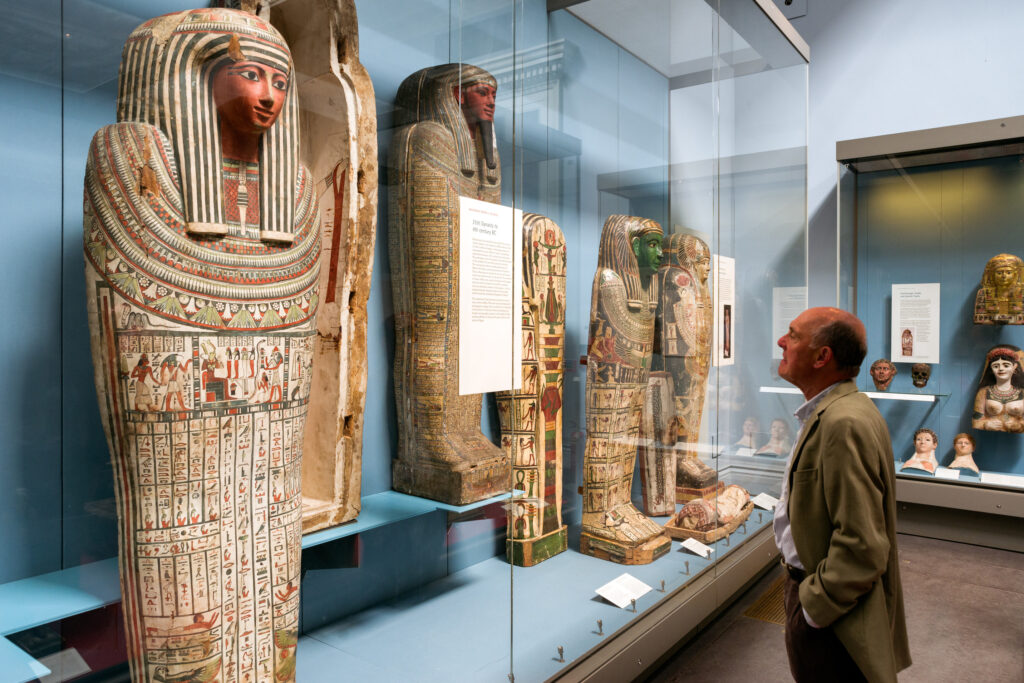
Key Collections of the British Museum
Ancient Egypt and Sudan
The British Museum’s collection of Egyptian antiquities is one of the largest and most comprehensive in the world, encompassing over 100,000 objects.
- Rosetta Stone: View the Rosetta Stone, the key to understanding Egyptian hieroglyphs, and learn about its pivotal role in Egyptology.
- Mummies and Coffins: Explore the extensive collection of mummies, coffins, and burial artifacts, including the famous mummies of Egyptian pharaohs and nobles.
- Sculptures and Reliefs: Admire the monumental sculptures and reliefs from ancient temples and tombs, including statues of pharaohs, deities, and iconic figures like the Sphinx of Taharqo.
Ancient Greece and Rome
The museum’s Greek and Roman collections offer a profound insight into classical antiquity, featuring masterpieces of art, sculpture, and everyday objects.
- Elgin Marbles: Marvel at the Elgin Marbles, a collection of classical Greek marble sculptures that adorned the Parthenon in Athens.
- Roman Britain: Discover artifacts from Roman Britain, including mosaics, statues, and everyday items that reveal life in ancient Britain under Roman rule.
- Greek Vases: Examine the intricate designs and craftsmanship of Greek vases, which depict scenes from mythology, athletics, and daily life.
Middle Eastern Antiquities
The British Museum’s collection of Middle Eastern antiquities spans from prehistoric times to the Islamic period, showcasing the rich cultural heritage of the region.
- Assyrian Reliefs: View the impressive Assyrian reliefs from the palaces of Nineveh and Nimrud, depicting royal hunts, battles, and mythological scenes.
- Babylonian Artifacts: Explore artifacts from ancient Babylon, including cuneiform tablets, cylinder seals, and the iconic Ishtar Gate.
- Islamic Art: Discover the beauty of Islamic art, including ceramics, textiles, calligraphy, and architectural fragments from across the Islamic world.
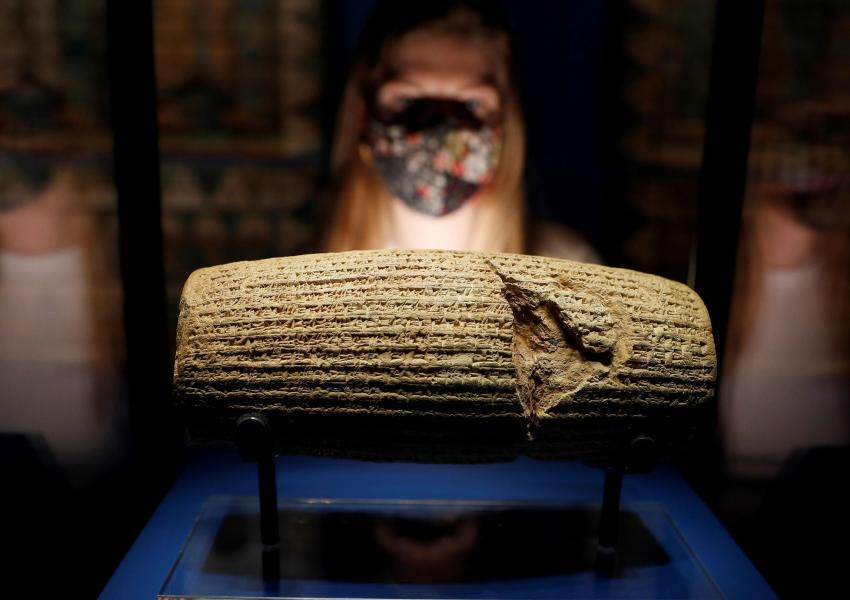
The Cyrus Cylinder
One of the most significant artifacts in the British Museum’s Middle Eastern collection is the Cyrus Cylinder, often referred to as the first declaration of human rights.
- Historical Context: The Cyrus Cylinder dates back to the 6th century BC and was created by Cyrus the Great, the founder of the Achaemenid Empire in Iran.
- Inscription: The cylinder’s cuneiform inscription details Cyrus’s conquest of Babylon and his policies of religious freedom and repatriation of displaced peoples.
- Cultural Impact: Learn about the cylinder’s significance in the context of ancient human rights and its influence on modern concepts of freedom and tolerance.
Asia
The museum’s Asian collection includes art, artifacts, and cultural objects from China, Japan, India, and Southeast Asia.
- Chinese Ceramics: Admire the exquisite collection of Chinese ceramics, including delicate porcelain, intricate jade carvings, and monumental Tang dynasty sculptures.
- Japanese Samurai Armor: Explore the collection of Japanese samurai armor, weapons, and textiles that highlight the artistry and culture of feudal Japan.
- Indian Art: Discover the diverse art of India, from ancient sculptures and temple carvings to vibrant paintings and textiles.
Africa, Oceania, and the Americas
The British Museum’s collection of artifacts from Africa, Oceania, and the Americas reflects the diverse cultures and histories of these regions.
- Benin Bronzes: Examine the intricate Benin Bronzes, a collection of plaques and sculptures from the Kingdom of Benin, known for their artistic and historical significance.
- Maori Artifacts: Explore the Maori artifacts from New Zealand, including carved wooden objects, textiles, and ceremonial items that highlight the rich cultural heritage of the Maori people.
- Pre-Columbian Art: Discover the art and artifacts of ancient civilizations in the Americas, including the Maya, Aztec, and Inca cultures.
Unique Features of the British Museum
The Great Court
The Great Court is a spectacular architectural marvel and the centerpiece of the British Museum.
- Glass Roof: Marvel at the stunning glass roof, designed by architect Norman Foster, which floods the court with natural light.
- Reading Room: Visit the historic Reading Room, once frequented by scholars and intellectuals such as Karl Marx and Virginia Woolf.
Digital and Interactive Exhibits
The British Museum offers a range of digital and interactive exhibits that enhance the visitor experience.
- Interactive Guides: Utilize interactive guides and touchscreens throughout the museum to learn more about the artifacts and their historical context.
- Virtual Tours: Take advantage of virtual tours and online collections available on the museum’s website, allowing you to explore the exhibits from anywhere in the world.
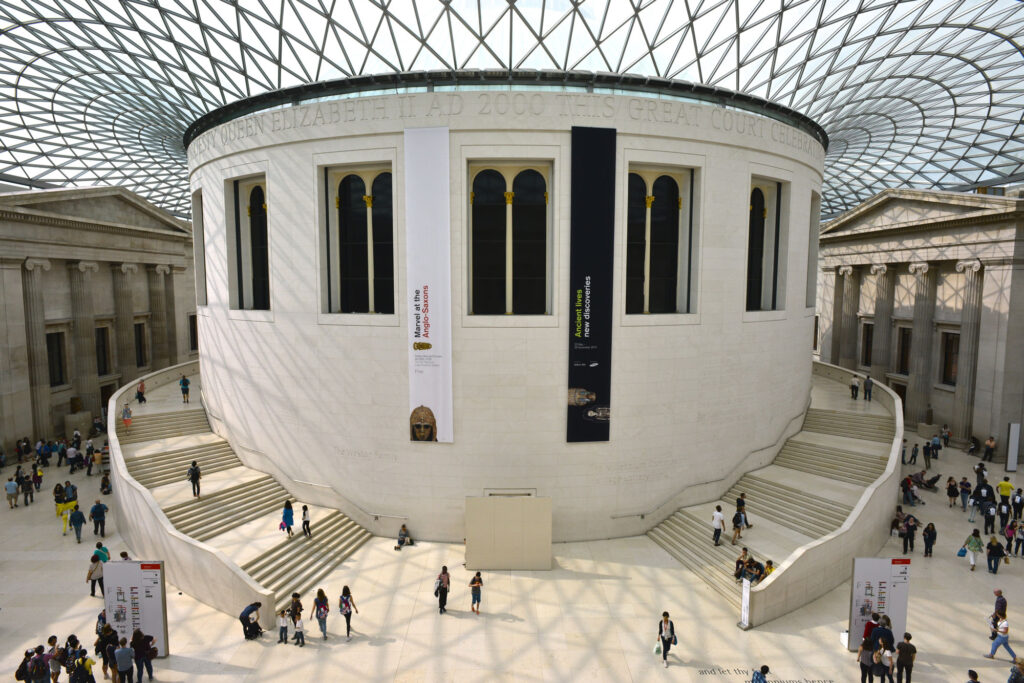
Special Exhibitions and Events
The museum hosts a variety of special exhibitions and events throughout the year, showcasing specific themes, cultures, and artists.
- Temporary Exhibitions: Explore temporary exhibitions that delve into specific periods, regions, or topics, offering fresh perspectives and new insights.
- Cultural Events: Attend cultural events, lectures, and workshops that provide deeper understanding and engagement with the museum’s collections.
Practical Information for Tourists
Getting There
The British Museum is located in the Bloomsbury area of London, easily accessible by public transportation.
- By Tube: The nearest tube stations are Tottenham Court Road, Holborn, and Russell Square.
- By Bus: Several bus routes serve the museum, with stops nearby on Great Russell Street and Tottenham Court Road.
- By Train: The museum is a short walk from Euston, King’s Cross, and St Pancras International railway stations.
Opening Hours and Tickets
The British Museum is open to visitors year-round, with free general admission.
- Opening Hours: The museum is typically open from 10:00 AM to 5:30 PM, with extended hours on Fridays. It is advisable to check the official website for the most up-to-date information.
- Free Admission: General admission to the British Museum is free, but special exhibitions may require a ticket.
Accessibility
The British Museum is committed to providing a welcoming and accessible experience for all visitors.
- Wheelchair Access: The museum is fully accessible to visitors with mobility issues, with ramps, elevators, and accessible restrooms available throughout the building.
- Services for Visitors with Disabilities: The museum offers a range of services, including sensory backpacks, touch tours, and sign language interpretation for deaf and hard-of-hearing visitors.
Tips for an Enjoyable Visit
Plan Your Visit
To make the most of your time at the British Museum, it’s helpful to plan ahead and prioritize the collections and exhibits that interest you the most.
- Museum Map: Pick up a museum map at the entrance to help navigate the extensive galleries and locate specific artifacts and exhibits.
- Guided Tours: Consider joining a guided tour led by knowledgeable docents who provide in-depth information about the museum’s collections and history.
Capture the Moment
The British Museum offers numerous opportunities for stunning photographs. Here are some tips to capture the best shots:
- Great Court: The Great Court is a must-photograph location, with its impressive architecture and natural lighting.
- Iconic Artifacts: Photograph iconic artifacts such as the Rosetta Stone, the Elgin Marbles, and the Egyptian mummies, while respecting any photography restrictions.
Must-See Highlights at the British Museum
The Rosetta Stone
The Rosetta Stone is one of the most famous artifacts in the British Museum and a key to understanding Egyptian hieroglyphs.
- Historical Significance: Learn about the stone’s role in deciphering ancient Egyptian writing and its impact on Egyptology.
- Detailed Examination: Take a close look at the inscriptions in three scripts—hieroglyphic, demotic, and Greek—that enabled scholars to unlock the secrets of ancient Egypt.
The Elgin Marbles
The Elgin Marbles are a collection of classical Greek marble sculptures that originally adorned the Parthenon in Athens.
- Artistic Mastery: Admire the exquisite craftsmanship and intricate details of these ancient sculptures, which depict gods, heroes, and mythical creatures.
- Cultural Controversy: Understand the ongoing debate surrounding the acquisition and ownership of the Elgin Marbles and their cultural significance.
The Cyrus Cylinder
The Cyrus Cylinder is a significant artifact often regarded as the first declaration of human rights.
- Historical Context: The Cyrus Cylinder dates back to the 6th century BC and was created by Cyrus the Great, the founder of the Achaemenid Empire.
- Inscription: The cylinder’s cuneiform inscription details Cyrus’s conquest of Babylon and his policies of religious freedom and repatriation of displaced peoples.
- Cultural Impact: Learn about the cylinder’s significance in the context of ancient human rights and its influence on modern concepts of freedom and tolerance.
Egyptian Mummies
The museum’s extensive collection of Egyptian mummies offers a fascinating glimpse into the beliefs and practices of ancient Egyptian civilization.
- Preservation Techniques: Learn about the mummification process and the techniques used to preserve bodies for the afterlife.
- Burial Artifacts: Explore the range of burial artifacts, including coffins, canopic jars, and funerary masks, that accompanied mummies into the afterlife.
Assyrian Reliefs
The Assyrian reliefs are monumental stone panels from the palaces of ancient Assyrian kings, depicting scenes of royal life, warfare, and mythology.
- Artistic Achievement: Marvel at the intricate carvings and detailed narratives that bring the ancient Assyrian world to life.
- Historical Context: Discover the historical and cultural significance of the Assyrian Empire and its contributions to art and architecture.
Dining and Shopping at the British Museum
Dining Options
The British Museum offers several dining options, allowing visitors to enjoy a meal or a snack amidst their cultural exploration.
- Great Court Restaurant: Located under the stunning glass roof of the Great Court, this restaurant offers a range of dishes, from light snacks to full meals, in a stylish setting.
- Museum Cafe: Enjoy a casual meal or a quick coffee at the museum’s cafe, which offers sandwiches, salads, pastries, and beverages.
- Gallery Cafe: Located within the galleries, the Gallery Cafe provides a convenient spot to rest and refresh with a selection of hot and cold drinks and snacks.
Museum Shops
The British Museum’s shops offer a wide selection of books, prints, gifts, and souvenirs inspired by the museum’s collections.
- Main Shop: The main shop, located near the Great Court, features an extensive range of art books, exhibition catalogs, and high-quality reproductions of famous artifacts.
- Gallery Shops: Smaller shops located within specific galleries offer themed merchandise related to the exhibits, including jewelry, textiles, and decorative items.
Practical Tips for Visitors
Best Time to Visit
The best time to visit the British Museum is during the early morning or late afternoon, when the museum is less crowded.
- Weekdays: Weekdays, especially Tuesdays and Wednesdays, tend to be quieter than weekends, making it a good time to explore the exhibits without the crowds.
- Seasonal Considerations: Consider visiting during the off-peak seasons, such as late fall or early spring, for a more relaxed experience.
Guided Tours and Audio Guides
To enhance your visit, consider joining a guided tour or renting an audio guide.
- Guided Tours: The museum offers a variety of guided tours, including general tours that cover the highlights of the collection and specialized tours that focus on specific themes or periods.
- Audio Guides: Audio guides are available in multiple languages and provide detailed information about the museum’s collections and history.
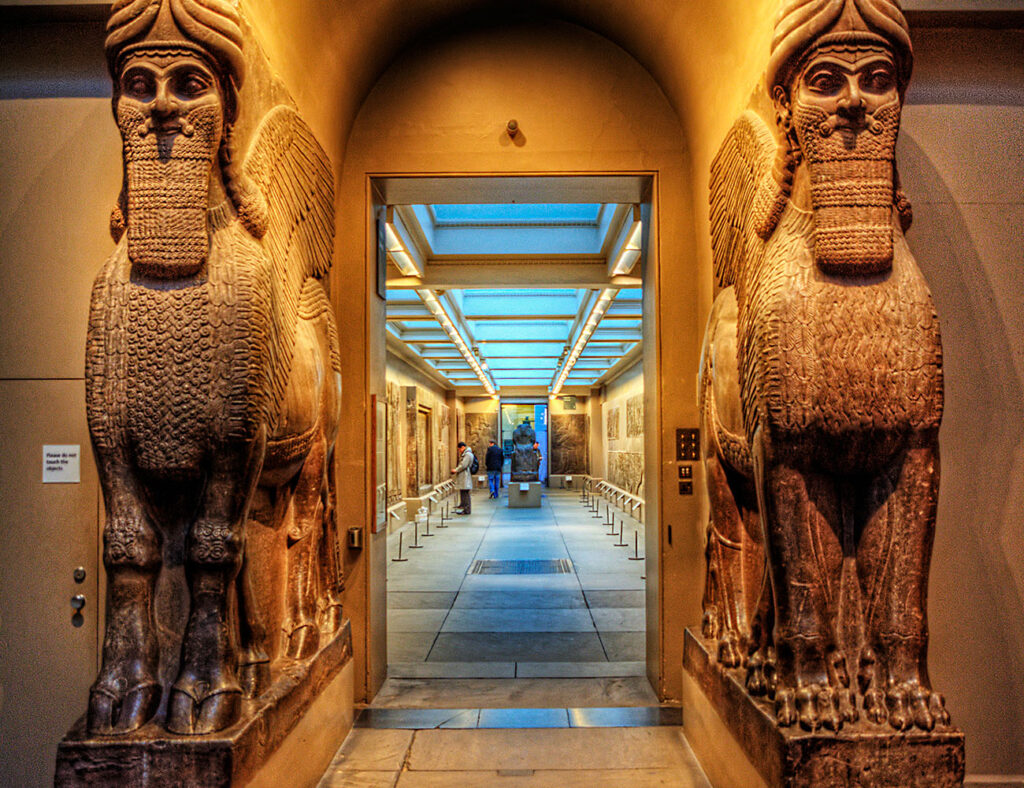
Conclusion
The British Museum stands as a beacon of cultural heritage and artistic achievement, offering visitors an unparalleled journey through the history of human civilization. From its world-renowned collections of ancient artifacts and classical masterpieces to its innovative exhibits and engaging educational programs, the British Museum provides an unforgettable experience for all who visit. Plan your trip to the British Museum and immerse yourself in the beauty, history, and wonder of one of the world’s most cherished cultural institutions. Embrace the opportunity to explore, discover, and create lasting memories in this iconic museum that embodies the essence of global heritage and artistic excellence.
-
Discover the World’s Treasures: Your Ultimate Guide to the British Museum, London
Discover the World’s Treasures: Your Ultimate Guide to the British Museum, London Welcome to the British Museum, one of the world’s most renowned cultural institutions, located […]

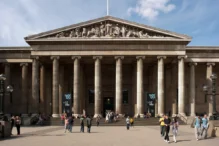

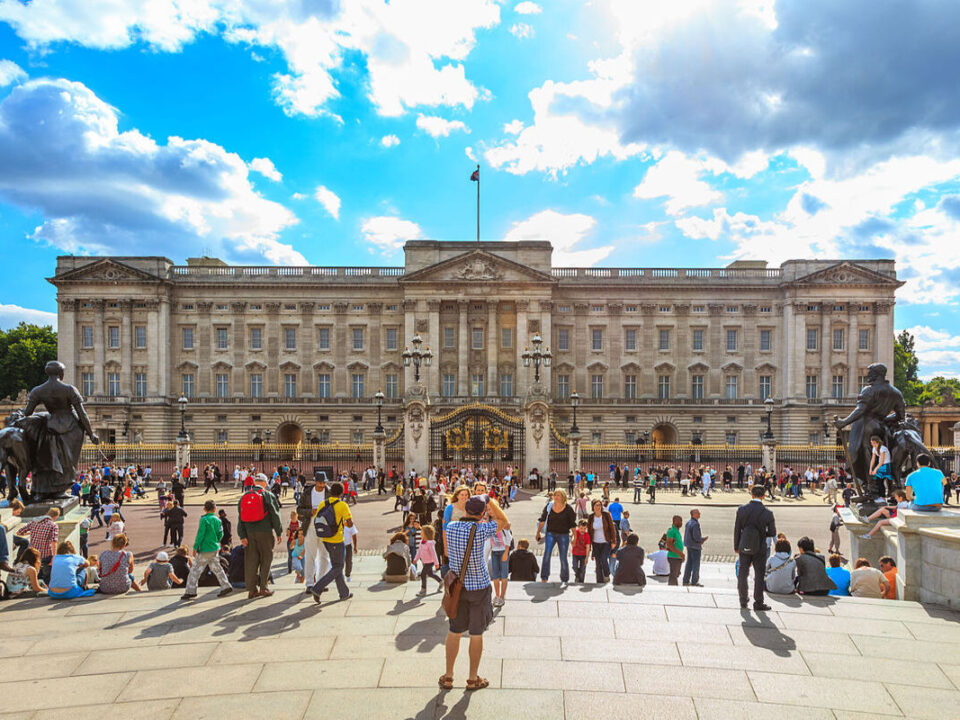

1 Comment
Very nice article, just what I wanted to find.!